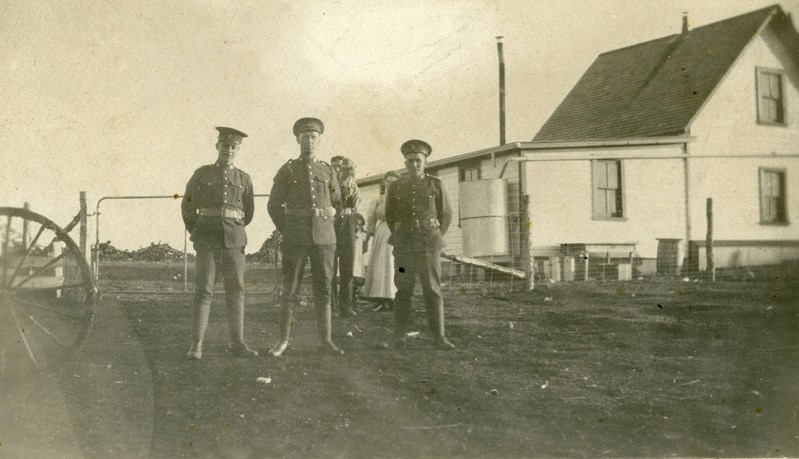RED DEER - Sunday April 9 marks the centennial of the Battle of Vimy Ridge. However, it is not just a commemoration of one of Canada's greatest military victories of the First World War. For many, it is a remembrance of an event that helped to forge a sense of nationhood in Canada.
At Vimy Ridge, the Canadians fought for the first time as a whole corps with all four divisions. As well, they were expected to meet their objectives with 50,000 fewer men than the French and British armies had lost in casualties at Vimy.
The Canadians spent an enormous amount of time planning and preparing. Strategies were tested and modified. Great quantities of equipment, supplies and ammunition were stockpiled.
At 5:30 a.m. on Easter Monday, a barrage of artillery erupted. The battle commenced.
The barrage was one of the greatest in history. The German defensives were pulverized.
The successes were swift and outstanding. By 6:05 a.m., the First Division had seized its first objectives. The second set of objectives was stormed by 7:13 a.m. Before noon, the third line was captured. Only the Fourth Division had serious difficulties with its assault on Hill 145.
The triumph was astonishing. However, it was a victory with an incredible cost. There were 10,600 casualties including 3,600 deaths.
Among the first reports back to Innisfail about the casualties stated that Horace Meeres of the 187th Battalion had been wounded. His son Raymond, of the 12 Canadian Mounted Rifles, was also badly wounded when shot through the lungs.
However, many of the men of the 187th Battalion were not in the initial assault on Vimy Ridge because they had been held back in the fall of 1916 due to an outbreak of mumps. Many of the 12th Canadian Mounted Rifles had already been killed or wounded in the brutal Battle of the Somme in the latter part of 1916.
The first to be reported killed in action were three young friends, Sydney Songhurst, Water Gowans and Joseph Snider, of the Hill End district east of Penhold. They had all joined the 89th together. All three lost their lives on the morning of April 9.
The flow of bad news soon became a flood. Word was received that Alfred Hornett, also of Hill End, had been killed. Will Richards, of Horn Hill, who had been the sole survivor of his unit in the Battle of the Somme, was killed at Vimy.
Robert Gordon, Wallace Briggs and Roy Smith, all of Innisfail, were reported wounded. Smith had enlisted shortly after his 18th birthday. Joseph Mitchell was reported to have died of wounds, but actually had survived.
"Duke" Wildman of the Little Red Deer district was badly wounded as was Edmund Hives of Penhold and J.L. Burke of Milnerton. Then word was received that Arthur Bryant of Innisfail in the 89th had been badly wounded in the abdomen, as had J.O. Robertson.
As the battle in and around Vimy Ridge continued, more news of the dead and wounded was received. G.W. Hill had written home right after the initial assault on Vimy to say he was OK. Tragically, he lost his life shortly thereafter. Miller Sim, who had been praised for carrying wounded from the battlefield, died of his own wounds. Oswald Knight, who had won the Military Cross for Bravery, was killed in action.
These are only some of the names of the local men who were killed or wounded.
The bad news from overseas continued until the Innisfail Province wrote "the War is coming to Innisfail every day." The paper added, "Innisfail men are doing their bit in Bloody Flanders."
A measure of the devastating impact on Central Alberta came one month after Vimy Ridge, on Sunday, June 10, 1917. A special memorial service was held at the Hill End schoolhouse for 11 young men who had lost their lives in the war.
Although the war was far from over, almost an entire generation of young men from one rural area had lost their lives.
Michael Dawe is a prominent historian from Red Deer.



